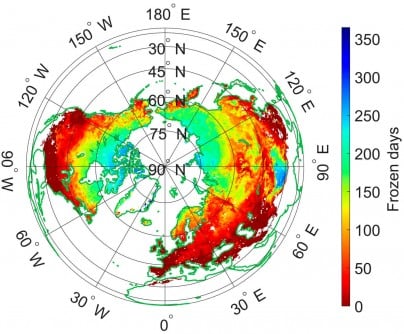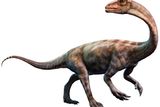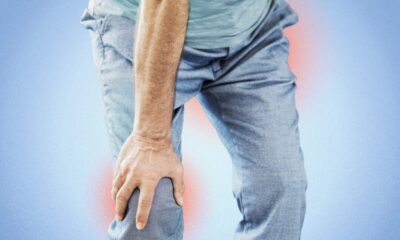Science
New Algorithm Enhances Soil Freeze-Thaw Monitoring from Space

Researchers from Fudan University, the University of Twente, and the Chengdu University of Information Technology have developed an innovative algorithm that significantly improves the detection of soil freeze-thaw transitions from space. This breakthrough, published on September 10, 2025, in the Journal of Remote Sensing, addresses the complexities of capturing these dynamic processes, which are critical for understanding weather patterns and hydrological cycles.
Dynamic Parameter Optimization in Soil Monitoring
Soil freeze-thaw (FT) transitions have a profound impact on surface albedo, moisture levels, and heat fluxes. Traditional large-scale models often overlook diurnal soil temperature variations and the heterogeneity of surfaces, leading to inaccuracies. Existing algorithms based on SMAP satellite data rely on fixed parameters, which can be ineffective across diverse land cover and climate conditions.
To overcome these limitations, the research team has introduced a dynamic parameter optimization algorithm that enhances soil freeze-thaw detection using L-band microwave remote sensing. This method adapts to regional variations in land cover, terrain, and climate, making it a robust framework for continuous monitoring. The algorithm improves the existing Diurnal Amplitude Variation-based Freeze-Thaw (DAV-FT) approach by incorporating three dynamically optimized parameters: α, β, and γ. These parameters represent the detection period, variance window, and threshold sensitivity, respectively.
Enhanced Accuracy and Validation Results
The optimization process uses a technique similar to maximum likelihood estimation to enhance overall classification accuracy across various regions. The results indicate a significant increase in areas with an overall accuracy (OA) greater than 0.7, rising from 54.43% to 89.36%. Notably, the algorithm performed exceptionally well in regions such as the Qinghai–Tibet Plateau, southwestern Eurasia, and southern North America.
Moreover, the new model demonstrated high consistency with existing datasets, achieving an 81.28% accuracy with the ERA5-Land dataset and 79.54% with the SMAP-FT dataset. Validation conducted using data from 828 in situ soil temperature stations affirmed the algorithm’s enhanced accuracy and stability, yielding a median accuracy of 0.92, surpassing both fixed-parameter and traditional SMAP products.
“The dynamic parameter optimization significantly enhances our ability to capture subtle soil freeze-thaw transitions that vary across regions and seasons,” stated Dr. Shaoning Lv, the study’s corresponding author.
Dr. Lv emphasized that the new method reflects diurnal surface changes in real-time, refining the retrieval accuracy of L-band data and offering a more coherent understanding of land-atmosphere interactions. This advancement is a crucial step toward global-scale climate monitoring with improved temporal and spatial precision.
The improved DAV-FT algorithm holds promise for various applications, including climate modeling, agricultural management, and hydrological forecasting. Its ability to account for diurnal temperature cycles and regional differences makes it particularly valuable for high-latitude and mountainous regions, where existing algorithms often struggle.
By enhancing the accuracy of soil state detection from space, this algorithm strengthens the foundation for assessing permafrost dynamics, water availability, and land-atmosphere energy fluxes—key elements in predicting the impacts of climate change and refining global land-surface models.
This research was supported by multiple funding sources, including the National Key R&D Program of China and the National Natural Science Foundation of China.
-

 Business5 days ago
Business5 days agoUK to Finalize Stablecoin Regulations by 2026, Boosting Crypto Sector
-

 Business6 days ago
Business6 days agoU.S. and U.K. Target Cybercriminal Networks, Seize $15 Billion
-

 World5 days ago
World5 days agoMilitary Artillery Plan Sparks Safety Concerns Along California Highway
-

 Lifestyle5 days ago
Lifestyle5 days agoKISS OF LIFE’s Natty Dazzles in Micro-Shorts at Seoul Event
-

 Sports5 days ago
Sports5 days agoDomenico Doran’s Stellar Performance Leads Bishop Amat to Victory
-

 World6 days ago
World6 days agoTrump Signals Reluctance to Sell Tomahawk Missiles to Ukraine
-

 Business6 days ago
Business6 days agoCalifornia to Eliminate All Plastic Bags from Stores by 2026
-

 Entertainment5 days ago
Entertainment5 days agoLouisiana Senate Raises Concerns Over Medicaid Cuts Amid New Bill
-

 Entertainment6 days ago
Entertainment6 days agoUtah Communities Rally as Government Shutdown Strains Resources
-

 Sports6 days ago
Sports6 days agoTrade Low, Trade High: Key NHL Players to Consider Now
-

 Science3 days ago
Science3 days agoAncient Dinosaur Discovery in Argentina Reveals Evolutionary Insights
-

 Health3 days ago
Health3 days agoUncovering the Hidden Link Between Knee Pain and Hip Issues









